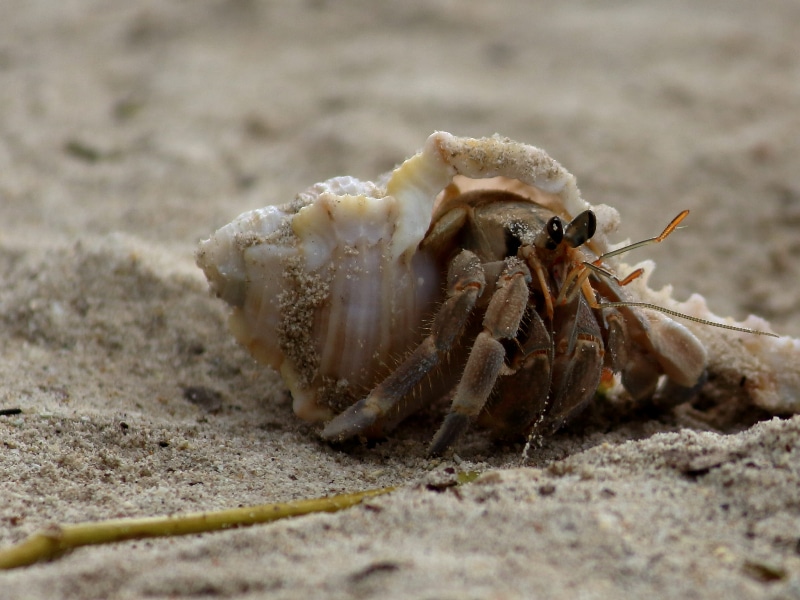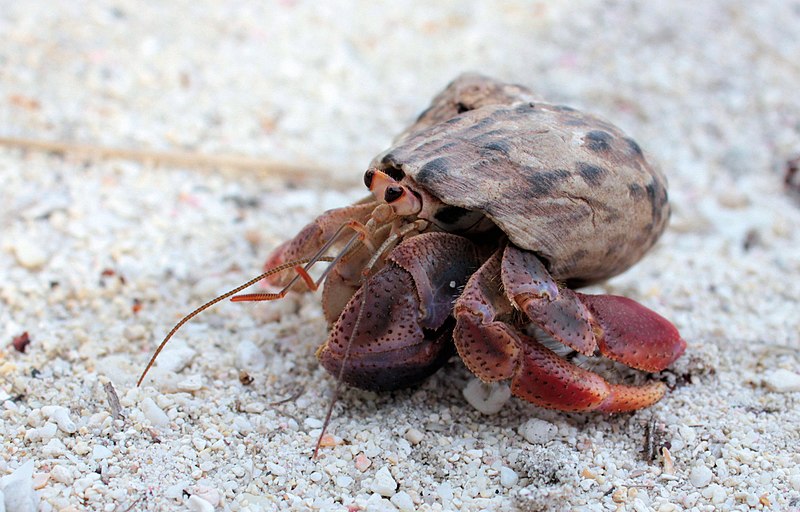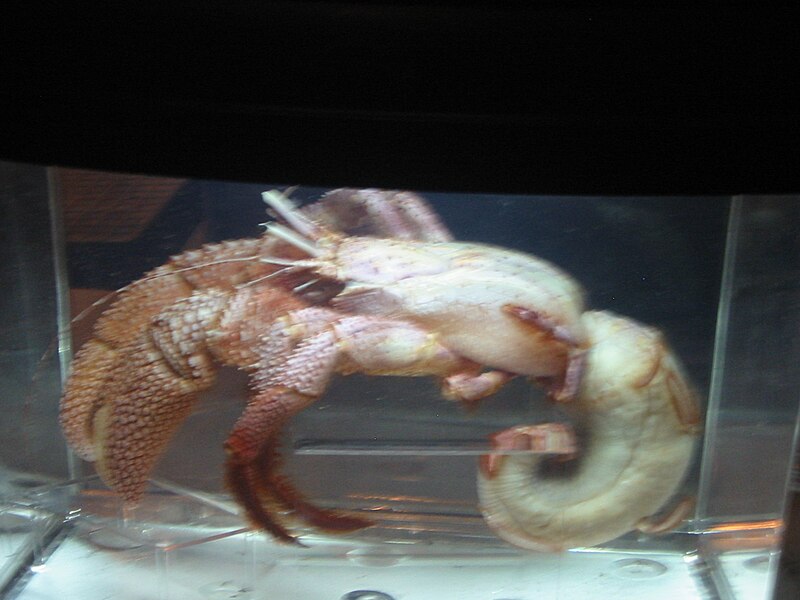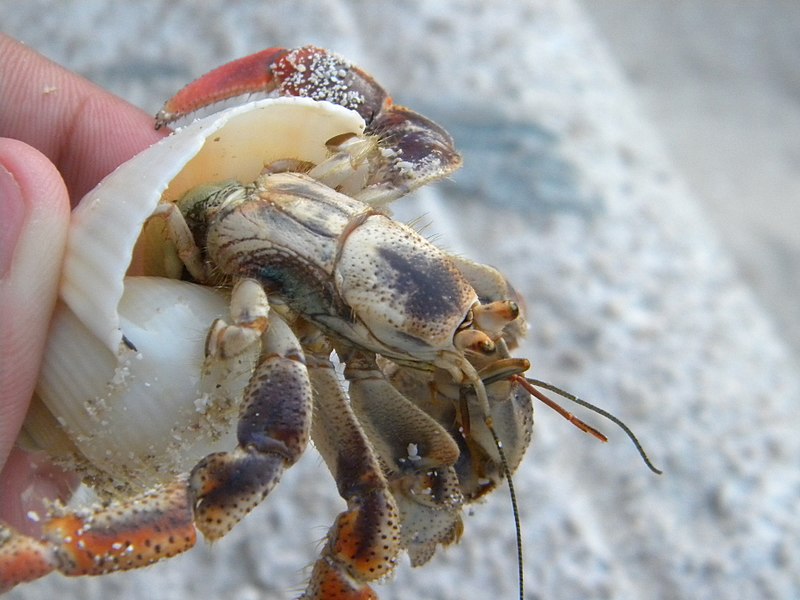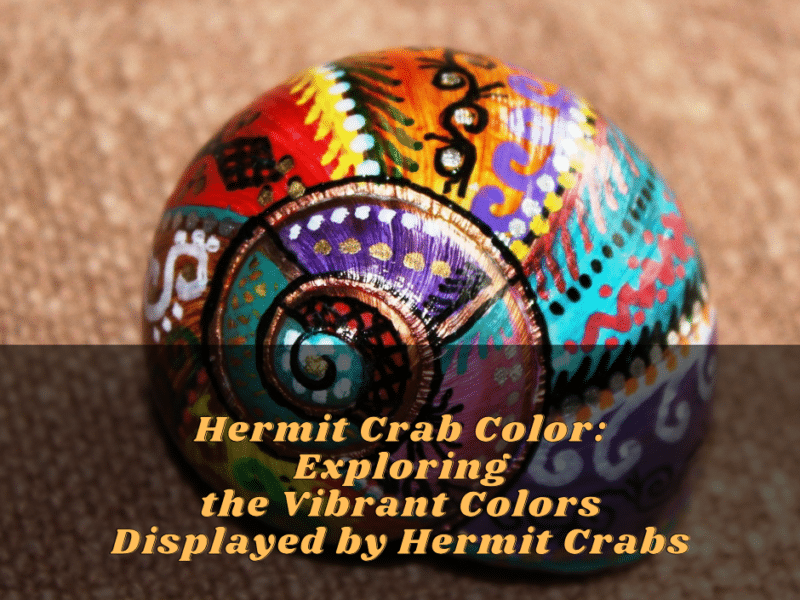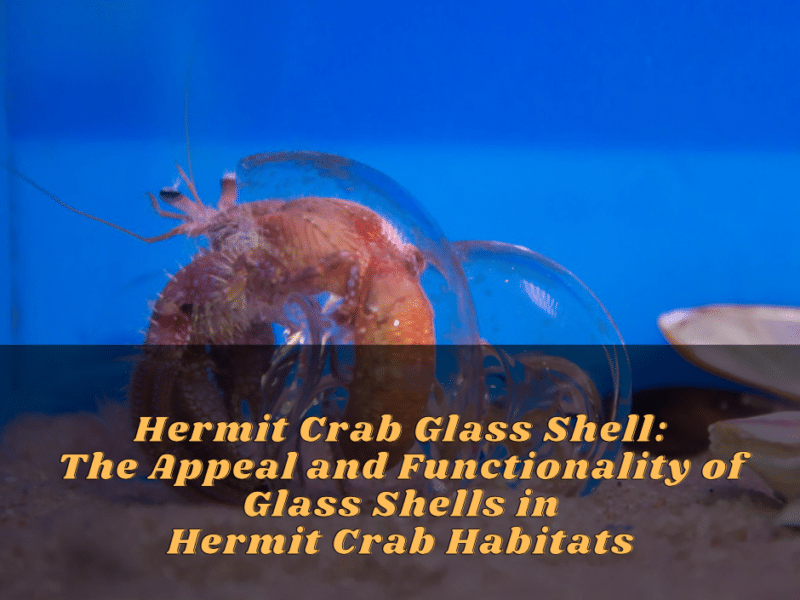Introduction
Hermit crabs are fascinating creatures known for their unique ability to inhabit and carry around empty seashells as their protective homes. However, there is a vulnerable state that hermit crabs experience when they find themselves without a shell. This vulnerable state highlights the importance of the shell for their survival and signifies the crucial role it plays in their lives. Let’s delve deeper into the story of the hermit crab and its shell, as well as explore the vulnerable state of a hermit crab without its shell.
The Story Of The Hermit Crab And Its Shell
The hermit crab’s story starts with its initial discovery of an empty seashell, usually abandoned by a snail. The hermit crab searches for a suitable shell and once found, it skillfully twists its body into the shell to protect its soft abdomen. This shell becomes its home, its sanctuary, offering shelter and security from predators, extreme weather conditions, and other dangers lurking in its environment. As the hermit crab grows, it periodically seeks out larger shells to accommodate its increasing size, carefully transitioning from one shell to another. This unique behavior of using shells as a portable home distinguishes hermit crabs from other marine creatures.
The Vulnerable State Of A Hermit Crab Without Its Shell
However, there are instances where hermit crabs find themselves temporarily shellless. This can happen when they outgrow their current shell but don’t immediately find another suitable one to move into. During this vulnerable state, the hermit crab is exposed and defenseless. Without the protective shell, its soft abdomen is completely exposed, making it susceptible to attacks from predators and adverse environmental conditions. In this vulnerable state, the hermit crab must rely on its agility, swiftness, and instinct to survive until it finds a new shell.
During this period, the hermit crab will seek out secluded areas or burrow into the sand to hide and protect itself from potential predators. It becomes incredibly cautious, constantly scanning its surroundings for any signs of danger. The hermit crab’s survival instincts kick in, and it will actively search for a new shell, exploring its surroundings and evaluating potential options. Finding a suitable shell becomes a matter of life and death for the hermit crab, as it desperately needs the protection and security it provides.
In Conclusion, the hermit crab’s story emphasizes the significance of the shell as its protective home. The vulnerable state of a hermit crab without its shell serves as a reminder of the importance of finding and securing a suitable shelter. It showcases the resourcefulness and adaptability of these remarkable creatures as they navigate the precariousness of life in the absence of their protective armor. So, the next time you come across a hermit crab, remember the vital role its shell plays in ensuring its survival, and appreciate the resilience of these fascinating little creatures.
Causes And Effects Of Shell Abandonment
Stress-related Shell Evacuation
When a hermit crab outgrows its current shell, it faces the difficult task of finding a larger home to accommodate its growth. However, this process can be challenging and stressful, as suitable shells may not always be readily available. Factors such as environmental changes, competition with other hermit crabs, or limited shell supply can contribute to shell abandonment.
During this period of shelllessness, hermit crabs experience increased vulnerability and stress. Without a protective shell, their soft abdomens are exposed to potential predation and environmental hazards. This exposure can cause heightened levels of stress, leading to physiological changes in the crab’s body, such as decreased activity, loss of appetite, and reduced reproduction.
The Impact Of Shelllessness On Hermit Crab Well-being
The absence of a shell significantly affects the overall well-being of a hermit crab. Without a protective home, the exposed abdomen is more susceptible to injuries, infections, and dehydration. Increased predation risk forces shellless hermit crabs to adopt evasive behaviors, such as hiding, burrowing, or seeking refuge in crevices or vegetation.
Shelllessness also impacts the crab’s mobility and ability to explore its surroundings. The exposed abdomen restricts movement, making it challenging for the crab to navigate efficiently. Limited mobility decreases foraging opportunities and may result in nutritional deficiencies, impacting the crab’s growth and overall health.
Additionally, shell abandonment affects social interactions among hermit crabs. Dominance hierarchies, mating rituals, and territorial disputes rely on visual cues and recognition of individuals’ shells. Shellless hermit crabs may struggle in these social interactions, leading to increased stress and isolation.
The long-term consequences of prolonged shelllessness can be severe. Without the protection provided by a shell, hermit crabs may experience increased mortality rates, decreased reproductive success, and stunted growth. The lack of a suitable shell undermines the crab’s physiological and behavioral adaptations, jeopardizing its ability to survive in its natural habitat.
It is crucial to understand the potential implications of shell abandonment on hermit crabs’ well-being. Conservation efforts and habitat preservation play a crucial role in maintaining healthy populations of hermit crabs, ensuring the availability of suitable shells, and minimizing the stress and vulnerability they experience in their natural environments.
In conclusion, shell abandonment exposes hermit crabs to increased stress and vulnerability. The absence of a protective shell impacts their well-being, compromising their ability to thrive in their natural habitat. Understanding the causes and effects of shelllessness underscores the importance of maintaining healthy populations and preserving suitable shell resources for these fascinating creatures. By protecting their habitat and promoting conservation efforts, we can contribute to the overall well-being and survival of hermit crabs in their fragile ecosystem.
The Significance Of Shells In A Hermit Crab’s Life
Shells As A Vital Component Of Hermit Crab Natural History
Shells play a crucial role in the life of a hermit crab. These fascinating creatures do not have a hard exoskeleton like other crabs. Instead, they rely on discarded shells to provide protection and support for their soft abdomens. As hermit crabs grow, they need to find larger shells to accommodate their increasing size. The process of finding and acquiring suitable shells is essential to their survival and well-being.
Hermit crabs have evolved to become experts in repurposing shells. They search for shells that fit their bodies perfectly and then use their modified hind limbs, known as pereopods, to grasp and hold onto the shell’s opening. The crab tucks its abdomen inside the shell, securing it with specialized appendages called uropods. This arrangement not only offers protection from predators but also helps maintain moisture and prevent desiccation.
The association between hermit crabs and shells is so strong that it has become an integral part of their natural history. The availability and quality of shells directly influence their habitat selection, behavior, and overall well-being.
Challenges Of Finding Optimal Shells And Their Effects On Hermit Crabs
While shells are vital to hermit crabs, finding optimal shells can be challenging and have significant effects on their lives. Here are some key challenges and their impacts:
Limited Shell Supply: As human activities impact coastal ecosystems, the availability of suitable shells for hermit crabs diminishes. Pollution, habitat degradation, and shell collection by humans reduce the number of shells that hermit crabs can use for their homes. This scarcity forces hermit crabs to compete for shells, making it more difficult for them to find suitable replacements when needed.
Environmental Changes: Environmental changes, such as rising ocean temperatures and ocean acidification, can affect hermit crab populations and shell availability. These changes can disrupt the delicate balance of shell production by marine organisms and reduce the number and quality of shells on the seafloor. Without an adequate supply of suitable shells, hermit crabs are forced to use suboptimal shells or risk shelllessness.
Competition and Predation: Hermit crabs not only compete with each other for shells but also face predation risks during shell acquisition. Larger hermit crabs often dominate smaller ones, displacing them from their shells. This displacement can result in shell abandonment and increased vulnerability to predators. Shellless hermit crabs have soft bodies exposed to potential injuries, infections, and dehydration.
The challenges of finding optimal shells and the subsequent effects on hermit crabs can have far-reaching consequences for their overall well-being. Shell abandonment increases stress levels and vulnerability for hermit crabs, putting their survival at risk. It is crucial to understand and address these challenges through conservation efforts, habitat preservation, and promoting responsible shell collection practices.
In conclusion, shells are a vital component of a hermit crab’s life. They provide protection, support, and a sense of security for these fascinating creatures. However, finding optimal shells can be challenging due to limited shell supply, environmental changes, competition, and predation. The effects of these challenges can impact hermit crab populations and their ability to thrive in their natural habitats. Understanding and addressing these issues are essential for the conservation of hermit crabs and the preservation of their delicate ecosystem.
Examining Vulnerability And Signaling Behavior In Hermit Crabs
Testing The Vulnerability Handicap Model
In the fascinating world of hermit crabs, their shells play a vital role in protecting and supporting their soft abdomens. However, there are instances when hermit crabs find themselves without their protective shells, leaving them in a vulnerable state. This vulnerability has led researchers to explore the concept of the Vulnerability Handicap Model in hermit crabs.
The Vulnerability Handicap Model suggests that individuals displaying traits or behaviors that indicate vulnerability are actually honest signals of their fitness and ability to cope with challenges. In the case of shellless hermit crabs, their exposed bodies and lack of protection make them more susceptible to predation and other dangers. However, they may possess other traits or behaviors that compensate for their vulnerability.
Researchers have conducted studies to test this model by examining the behavior and survival rates of shellless hermit crabs compared to those with shells. Surprisingly, some findings suggest that shellless hermit crabs exhibit aggressive behavior towards crabs with shells, engaging in conflicts and attempting to displace them from their shells. This aggression may serve as a form of signaling their fitness and competitiveness despite their vulnerability.
Agonistic Signaling And Conflict Engagement In Shellless Hermit Crabs
Agonistic signaling, or the display of aggressive behavior to establish dominance or intimidate rivals, is a common phenomenon in many animal species. Shellless hermit crabs have been observed engaging in aggressive encounters with shelled crabs, showcasing various signaling behaviors.
The conflict engagement between shellless hermit crabs and crabs with shells involves vigorous antennal fencing, claw displays, and physical contests over limited resources such as available shells. The shellless hermit crabs demonstrate their strength, agility, and competitiveness, attempting to claim a shell that will provide them protection and elevate their status.
While shellless hermit crabs may be physically vulnerable, their aggressive signaling behaviors highlight their determination and potential fitness to secure a shell. These displays may serve as honest signals to potential rivals, indicating that despite their vulnerability, they possess traits that make them formidable competitors.
Understanding the behavior and signaling strategies of shellless hermit crabs can provide valuable insights into the evolutionary dynamics of vulnerability and competition. Further research is needed to explore the specific mechanisms and fitness implications associated with these behaviors in shellless hermit crabs.
In conclusion, exploring the vulnerability and signaling behavior of shellless hermit crabs sheds light on their adaptation strategies and competitive nature. The Vulnerability Handicap Model suggests that shellless hermit crabs may compensate for their physical vulnerability by displaying aggressive behaviors and signaling their fitness and competitiveness. By understanding these dynamics, researchers can gain a deeper appreciation for the resilience and survival strategies of these fascinating creatures.
Research Findings: The Influence Of Shell Fit On Signaling Behavior
The Effect Of Shell Fit On Crabs’ Engagement In Conflicts
Research on hermit crabs without shells has revealed interesting insights into the influence of shell fit on their signaling behavior and engagement in conflicts. It has been observed that hermit crabs without suitable shells are more likely to engage in aggressive encounters with crabs possessing well-fitting shells. This behavior suggests that shellless crabs are actively seeking to acquire a more suitable shell to protect themselves and enhance their competitive advantage.
The findings indicate that shell fit plays a crucial role in determining the level of aggression displayed by hermit crabs. When a shell does not provide adequate protection or fit well, the vulnerability of the crab increases, leading to heightened aggression as a means to secure a better fitting shell. This aggressive behavior serves as a signaling mechanism to convey the crab’s determination to obtain a suitable shell and its potential fitness in handling challenges.
Conveying Reliable Information Through Threatening Behavior
Threatening behavior displayed by shellless hermit crabs serves as a means to convey reliable information to potential rivals. While shellless crabs may appear physically vulnerable, their aggressive signals are an honest indication of their determination and competitiveness. By engaging in conflicts and displaying threatening behaviors such as vigorous antennal fencing and claw displays, shellless crabs communicate their agility, strength, and readiness to compete for a more suitable shell.
Through these displays, shellless hermit crabs effectively convey that despite their temporary vulnerable state, they possess qualities that make them formidable competitors. This reliable information enables rival crabs to make informed decisions regarding the level of competition they are likely to face. It also highlights the importance of shell fit as a critical factor in determining the signaling behavior displayed by hermit crabs.
Understanding the reciprocal relationship between shell fit and signaling behavior in hermit crabs provides valuable insights into their adaptation strategies and competitive nature. It reveals the complex dynamics involved in acquiring and defending shells, vital for their survival and protection. These findings contribute to our understanding of how vulnerability can shape behaviors and how competition influences the decision-making process of these fascinating creatures.
In conclusion, research on hermit crabs without shells sheds light on the influence of shell fit on their signaling behavior during conflicts. The findings highlight the significance of shell fit in determining the level of aggression displayed by shellless crabs and their ability to convey reliable information about their potential fitness and competitive advantage. This research deepens our understanding of the adaptive strategies adopted by hermit crabs and enhances our appreciation for their resilience and survival mechanisms in the face of vulnerability.
Conclusion
In conclusion, the research findings on hermit crabs without shells provide valuable insights into the influence of shell fit on their signaling behavior during conflicts. The studies reveal that shellless crabs are more likely to engage in aggressive encounters with crabs possessing well-fitting shells, as they actively seek to acquire a more suitable shell for protection and competitive advantage. Shell fit plays a crucial role in determining the level of aggression displayed by hermit crabs, as a shell that does not provide adequate protection or fit well increases their vulnerability, leading to heightened aggression as a means to secure a better fitting shell. This aggressive behavior serves as a signaling mechanism to convey the crab’s determination to obtain a suitable shell and its potential fitness in handling challenges. Furthermore, threatening behavior displayed by shellless hermit crabs serves as a means to convey reliable information to potential rivals. Despite their physical vulnerability, shellless crabs’ aggressive signals indicate their determination and competitiveness. Through displays such as antennal fencing and claw displays, shellless crabs communicate their agility, strength, and readiness to compete for a more suitable shell. Understanding the reciprocal relationship between shell fit and signaling behavior provides valuable insights into hermit crabs’ adaptation strategies and competitive nature.
Understanding The Vulnerable State Of A Shellless Hermit Crab
The research on hermit crabs without shells sheds light on their vulnerable state when they are shellless. This vulnerable state drives their behavior, as they actively seek a more suitable shell for protection and competitive advantage. The findings highlight the importance of shell fit in determining the level of aggression displayed by hermit crabs and their ability to convey reliable information about their potential fitness and competitive advantage. It reveals the complex dynamics involved in acquiring and defending shells, which are vital for their survival and protection. By understanding the vulnerable state of a shellless hermit crab, we gain a deeper appreciation for their resilience and adaptation strategies.
Implications For Hermit Crab Care And Conservation
The research findings have significant implications for hermit crab care and conservation efforts. Understanding the relationship between shell fit and signaling behavior can guide the design of suitable habitats for captive hermit crabs, ensuring they have access to appropriate shells. Providing a variety of shell options that fit well can reduce aggression and stress among hermit crabs in captivity. In terms of conservation, protecting the natural habitats of hermit crabs and ensuring the availability of suitable shells are crucial. By preserving their environments and maintaining a healthy shell population, we can support the survival and well-being of hermit crab populations in the wild.
Overall, the research on hermit crabs without shells enhances our understanding of these fascinating creatures and the significance of shell fit in their behavior. It reminds us of the importance of providing suitable shells for captive hermit crabs and the need to protect their natural habitats. By considering the vulnerable state of shellless hermit crabs, we can contribute to their welfare and conservation efforts.
FAQ: Hermit Crab Without Its Shell: Exploring the Vulnerable State of a Hermit Crab When Shellless
Q: What are hermit crabs without shells?
A: Hermit crabs without shells are crustaceans that do not have a protective exoskeleton, leaving their soft bellies vulnerable to predation.
Q: What challenges do shell-less hermit crabs face?
A: Living without a shell presents several challenges for shell-less hermit crabs. One major challenge is the constant risk of predation without the protective structures that shells provide. These crabs are also more susceptible to dehydration and require alternative methods to regulate their body moisture.
Q: How have shell-less hermit crabs adapted to their shell-less lifestyle?
A: Shell-less hermit crabs have developed fascinating adaptations to compensate for the absence of a protective shell. They have evolved a hard exoskeleton that offers some degree of protection. Additionally, they possess stronger pincers and more flexible appendages, aiding in defense and mobility.
Q: How do shell-less hermit crabs cope with their vulnerability?
A: Despite their vulnerability, shell-less hermit crabs navigate their world with resilience and determination. They have developed unique behavior and survival strategies to mitigate the risks associated with lacking a shell. By shedding light on their lives, we can gain a deeper understanding of nature’s complex web and work towards protecting and learning from these extraordinary creatures for future generations.
Q: What can we learn from shell-less hermit crabs?
A: Shell-less hermit crabs teach us about adaptation, competition, and the delicate balance of life in the ocean. Their vulnerability highlights the importance of protective structures and the impact of predation on organisms. Studying their survival strategies can provide insights into resilience and the power of adaptation.
